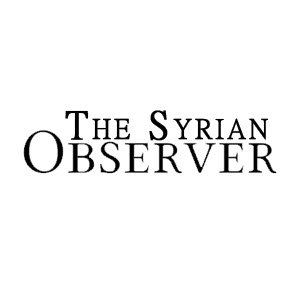Many observers agree that the Syrian army’s accomplishments over the past two months mark its most significant gains since the beginning of the crisis. As part of Operation Capital Shield, which began on August 20, the Syrian army’s offensive continues across the country.
Damascus – All eyes are on east Ghouta these days. The Syrians are waiting to hear about real achievements, ushering in the full liberation of the areas that have dominated the news cycle for the length of the fierce clashes taking place in the area over the past several months.
However, the Syrian government does not want to rush to make this announcement, so long as there remain some pockets still under the control of opposition fighters. In truth, the Syrian army has been deliberately leaving some of these pockets under siege for tactical reasons.
One example is the western side of Daria, which the Syrian army’s artillery continues to pound intermittently. Servicemen who fought in the town purport that their real mission in Daria is over, and that most troops have been moved to the Qaboun district.
Similarly, there is no progress to speak of in nearby Moaddamiya. The sporadic clashes on the northern edge of the neighborhood represent attempts by the army to test the militants’ defenses. Currently, the army controls only the northern and eastern sectors of the town.
North of Damascus, Qaboun and Harasta appear as if they have been razed to the ground, at least if one is to make a quick and dirty comparison using Google Earth images from 2012 and the images from 2013. Meanwhile, the official media still maintain that the “valiant army continues its progress in all areas of Jobar and Barzeh.”
On the Airport Road, things are a bit more dramatic. Here, the Syrian army has deployed its elite units, which have the ability to re-take areas where militants had seized Syrian army checkpoints and outposts. Ground-based advances are accompanied by the heavy shelling of the villages of Deir al-Asafeer, Shebaa, al-Nashabiyyeh, and Hteitet al-Turukman. Violent battles are also taking place in the town of Qasimia in east Ghouta on account of the fierce resistance put up by armed opposition fighters, who want to maintain their access to the Airport Road, hindering the army’s progress in the area.
Indeed, this effectively means that no one party has actual control over armed factions within Syria, and subsequently, the ability to push them toward a cessation of hostilities. In the Zabadani Mountains, which are in the range of the batteries of the Syrian army, the latter now has the militants in the eastern region under siege, and is awaiting orders to begin its assault there. In the Qalamoun plateau, Liwaa al-Islam began an offensive it dubbed “Submission to God,” with the aim of sequestering Damascus from the northern provinces and opening a supply line to opposition fighters through Lebanese territory.
At the same time, the Syrian army continues to shell militant concentrations – yet without making ground progress – in the hills of Rima and the Salihiyeh farms in the vicinity of Yabrud. Shelling also continues against the Nasim district of the town of Nabk, which is currently under siege by the Syrian army.
“Mohammad’s Army” in Syria
In the meantime, the armed brigades have refused to be represented by the opposition Syrian National Coalition (SNC) at the Geneva II conference, which is expected to convene in October. Liwaa al-Tawhid has called on all brigades to unite in a clear Islamic framework based on Sharia, and refused to recognize the interim government, the SNC, or any body based abroad, without first consulting local forces.
The snub to the external opposition has cast a shadow on the prospects for a negotiated solution hoped for by many Syrians, especially after SNC leader Ahmad al-Jarba made statements accusing foreign extremists of hijacking the Syrian revolution. Indeed, this effectively means that no one party has actual control over armed factions within Syria, and subsequently, the ability to push them toward a cessation of hostilities.
Moreover, several militant leaders in north Syria have declared the creation of a “Sunni” army, unifying some of the biggest brigades under its banner. The army, dubbed “Mohammad’s Army,” only accepts Sunni members and follows a plan drafted by Salafi clerics they called “the Coherent Structure.”
Despite claims by FSA leaders that its members are secular leaning compared to other factions like al-Nusra Front and the Islamic State in Iraq and Syria (ISIS), all the brigades that signed the statement declaring the founding of Mohammad’s Army are in fact affiliates of the Free Syrian Army, with the exception of al-Nusra Front.
Qalamoun Mosque Explosion
A car bomb exploded outside a mosque in the town of Rankous in the Qalamoun area of the Damascus countryside. The explosion took place outside al-Sahel Mosque as worshippers were leaving Friday prayers.
According to Rami Abdul-Rahman of the opposition Syrian Observatory for Human Rights, 30 people perished in the bombing. Abdul-Rahman, speaking to AFP, also said that the Syrian air force had carried out airstrikes on the eastern hills of the town of Nabk, also in the Damascus countryside, but that no casualties had been reported.
......


